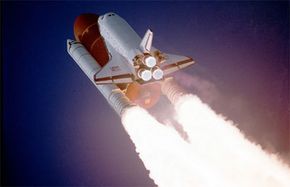Life in Space
Because of zero gravity (or microgravity, to be more precise), working in space is quite different from working on Earth. Astronauts must get used to being weightless, which causes bone and muscle deterioration and requires that all loose items -- including sleeping astronauts -- be tied down. Eating, drinking and using the bathroom are especially challenging activities for astronauts in orbit. Over the years, NASA has designed ingenious solutions that make living in space as comfortable as possible.
While in orbit, astronauts spend most of their time in the relatively safe confines of the craft or space station. Many missions, however, require a spacewalk, perhaps to deploy a satellite or make repairs. During a spacewalk, an astronaut must wear a space suit -- what NASA calls an extravehicular mobility unit (EMU) -- to protect and sustain him or her in the vacuum of outer space. Each EMU has a hard upper torso, a lower torso assembly and legs.
Advertisement
A portable life support system, or PLSS, integrates fully with the suit and is worn like a backpack. The weight of the EMU-PLSS assembly is considerable. The suit itself weighs about 110 pounds (50 kilograms), and the PLSS about 310 pounds (141 kilograms). For this reason, NASA designed EMUs for work in weightless conditions only, where the weight of the suit itself is unimportant. The Apollo suit, by comparison, was much different. Including the life support backpack, the Apollo suit weighed about 180 pounds (82 kilograms).
Most space stations missions last two to three weeks, but longer-duration missions may run as long as half a year. Usually, one astronaut on the Soyuz will trade places with one of the astronauts on the space station at the end of the mission. Then it's back to Earth.
